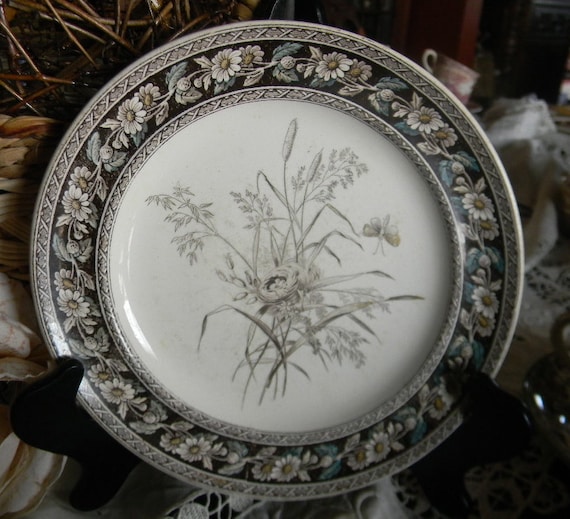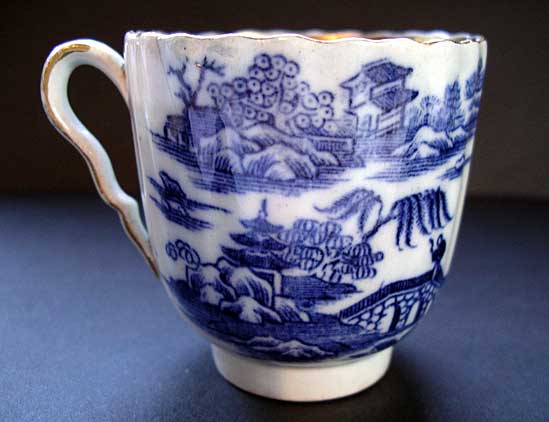 |
| Spode, "Jasmine, Turquoise and Black" |
Spode is a brand of ceramics and fine bone china based in Stoke on Trent, England, founded in 1767. That means, yes, Grandmas have been collecting Spode since the mid to late 1700s. Josiah Spode was renowned for his technique of blue transferware, underglaze pottery. My mother and grandmother both LOVED the Blue Willow Spode pattern, possibly the most well known and most popular of them all. They have countless patterns, popular for the past 250 years.
Some collectible notes: Anything after 1833 is considered "Late SPODE". The company changed hands at this time and for collectors that is a designation. You can find old and new SPODE just about anywhere; it is typically at flea markets and antique shops, yard sales, ebay. Its popularity has continued through the ages, so popular still that it is currently sold at Amazon, Macy's, Nieman Marcus, Horchow and don't be surprised if you see a SPODE Christmas pattern even at TJ Maxx.
If you love a pattern and see it at TJ Maxx, good for you, you have a special piece and you can call it an heirloom. If you're thinking of collecting SPODE check out this little SPODE starter roundup. The new "Archive Collection" is a series of reproductions of popular antique patterns. The back of the place will clearly state is an "Archive Collection" piece. Therefore, if you are buying ANYTHING on line, you should always ask to have a picture of the back of the plate for reference. This could make a difference of paying $35 for an Archive Collection set as apposed to $200+ for an original set. (see below for examples).
Here are the markings on the back of the plates/dish that will tell you when your piece was produced.
Like I said, there are COUNTLESS patterns, colors and motifs. Here are just a few.
 |
| Spode "Blue Willow" Platter |
 |
| Spode "Indian Tree Orange" |
 |
| Spode Victorian Aesthetic Movement ,"Butterflies and Daisies" Chocolate Brown, robins egg blue, yellow |

Spode Tiffany 1910-1920
 |
| Spode Canadian Centenial "Alberta" |
 |
| Spode Christmas Tree Pattern (I love the mistletoe and holly circling the inside of the cup and the saucer). |
{If you don't know the story of the Spode Christmas tree, it is a pretty cute one. In the 1930s, one of the designers for the British ceramic company's dinnerware was asked to create a Christmas tree design. The man had never seen an American Christmas tree before and at first drew the tree with presents hanging off the branches! Upon learning that this was not how the presents were placed, he moved them to their traditional spot underneath the tree and drew the tree with decorations of ornaments. He also didn't know what trees were topped with, hence the Santa Claus figurine drawn atop the tree where a star or angel would normally go.}
I've always wanted to travel to take a look at the Spode Museum's pattern book. You can visit their factory and museum and take a peek into Spode's amazing living history.
Here is my favorite! Maybe you recognize the one below from my last post about coconut cupcakes?!
 |
| Spode "Jasmine, Mint and Brown" |
|


















Love this post! I have fond memories of having Christmas Eve dinner at my grandma's house on the Christmas Tree pattern dishes. I'll have to look at her dishes more closely next time I'm at her house. Interesting!
ReplyDeleteThank you so much for posting this! I have started collecting the Christmas Tree pattern, but had no idea of the history.
ReplyDelete